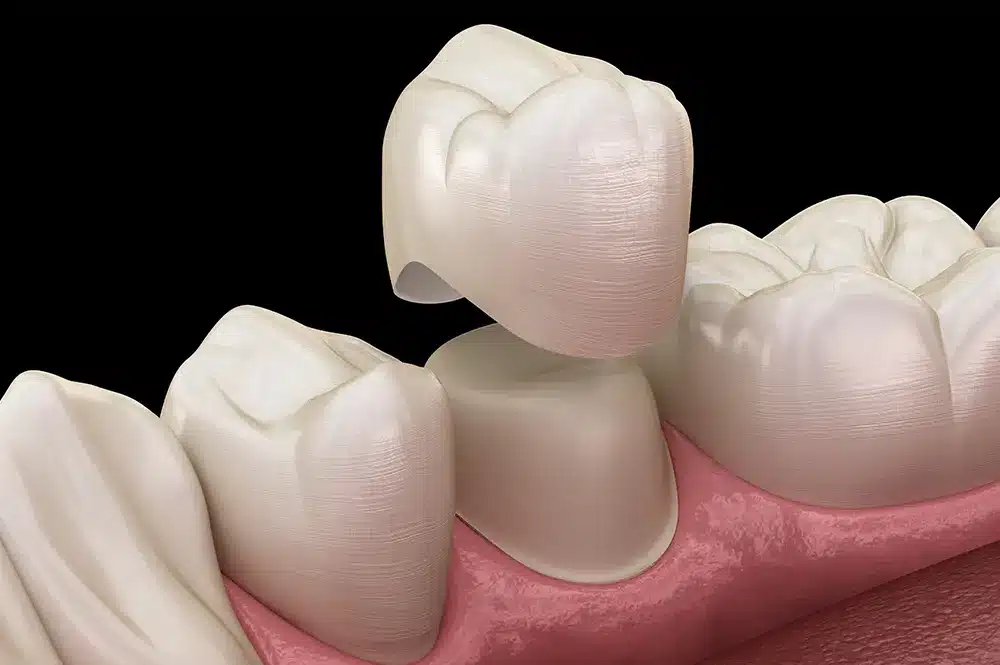Crowns
Crowns Overview
A dental crown restores a tooth’s shape, size, and strength. It fully encases the visible portion of your tooth or dental implant. Once it is permanently bonded in place, only a Dentist or Specialist can remove it.
With proper care and good oral hygiene, the life of a crown can range from 5 to 15 years.
If a natural tooth-colored porcelain crown is chosen, our CEREC® CAD/CAM treatment gives patients a completed permanent crown in just one office visit. Other types of crowns require two office visits.
When Prescribed
A crown may be prescribed by your Dentist to:
- Restore and protect a tooth that is worn, decayed, cracked, or broken
- Protect and support a tooth after a very large filling or root canal treatment
- Cover a dental implant
- Hold a dental bridge or other prosthetic device in place
- Improve your smile by covering a misshapen or severely discolored tooth
Crown Types
Your Dentist will recommend the best type of crown for your dental restoration needs based on the chewing placement and structure of the tooth or implant that requires protection. There are three types of crowns. Each type has its own characteristics and qualities:
Full Porcelain
Porcelain is attractive, strong, stable, and highly resistant to wear. It offers a high level of biocompatibility because it does not contain metal.
A porcelain crown provides the best natural color match to the rest of your teeth and is an excellent choice for front teeth.
Full-Metal
Metal offers strength and endurance. A metal crown may be recommended for back teeth where the forces of biting and chewing are the greatest. A metal crown rarely chips or breaks. In addition, it requires minimal removal of tooth structure.
A gold or other high-noble metal crown offers biocompatibility. A base metal crown is often the least expensive treatment options; however, it lacks biocompatibility and may cause allergic reactions or gum line discoloration.
Porcelain-Fused-to-Metal
Porcelain-fused-to-metal offers the benefits of a natural surface color that resembles the rest of your teeth and the strength of a metal substructure.
While there are several advantages to selecting this type of crown, it requires the removal of more tooth structure than other types of crowns. This means that there is greater potential for patient discomfort during the treatment procedure.
Patient Experience
After a thorough exam of your teeth, gums and supporting bone structure, your Dentist will discuss treatment options with you and answer your questions. If the agreed upon-treatment is a dental crown, your Dentist will apply a local anesthetic to prepare your tooth or dental implant.
Metal or Porcelain-Metal
After your tooth or dental implant has been prepared and shaped for a crown:
- A putty-like material is used to make impression of your prepared teeth. Your crown will be fabricated for a precise fit based on this impression.
- You will be fitted with a temporary crown to protect your tooth/implant and gums until your permanent crown has been fabricated.
- During a second office visit, your Dentist will fit your permanent crown and bond it to your tooth or dental implant.


